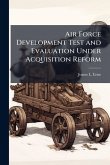Rapid evolution in the international political, social, and military environment, coupled with budget pressures within the federal government, have created a fluid setting for the military services. As fundamental as aircraft to the Air Force's ability to protect U.S. interests at home and abroad are the support functions that provide deployed basing for aircraft and aircrew alike. What are the factors that influence the civil engineer's ability to launch, support and sustain deployed military operations within the context of this environment and the national military strategy established to meet these challenges? Do current civil engineer capabilities fulfill Joint Vision 2010 and Air Force "Global Engagement" strategies, now and in the future, for interaction in the New World order? What steps are Air Force civil engineers taking, or should they take, to improve their ability to support deployed military operations? This study concludes that Air Force civil engineering is substantially in step with the evolving character of the current strategies that enable the U.S. military to engage across the spectrum of new and anticipated future world environments. This work has been selected by scholars as being culturally important, and is part of the knowledge base of civilization as we know it. This work was reproduced from the original artifact, and remains as true to the original work as possible. Therefore, you will see the original copyright references, library stamps (as most of these works have been housed in our most important libraries around the world), and other notations in the work. This work is in the public domain in the United States of America, and possibly other nations. Within the United States, you may freely copy and distribute this work, as no entity (individual or corporate) has a copyright on the body of the work. As a reproduction of a historical artifact, this work may contain missing or blurred pages, poor pictures, errant marks, etc. Scholars believe, and we concur, that this work is important enough to be preserved, reproduced, and made generally available to the public. We appreciate your support of the preservation process, and thank you for being an important part of keeping this knowledge alive and relevant.
Bitte wählen Sie Ihr Anliegen aus.
Rechnungen
Retourenschein anfordern
Bestellstatus
Storno








